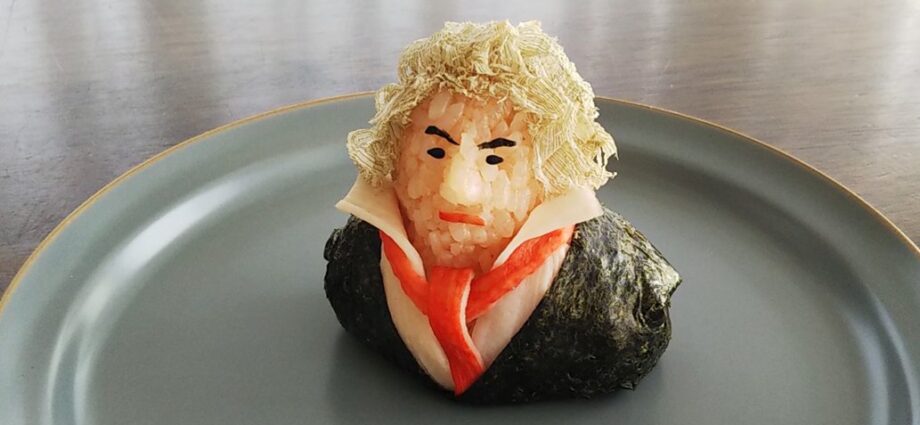As mentioned before, this was a staple of the car food box and it was the only time that Gma made them. That may be why they seemed so special to me as it meant summer vacation had begun and we’d be heading out to my favorite place in the world, MAINE!! Gma’s version was the simplest, just rice, lightly salted and served with a piece of seasoned nori.
So what’s the big deal? What originally started as a way to preserve rice for long journeys is now one of the most famous bento box items today, thanks to anime, creative cooks and onigiri artists! It is the simplest food item in the repertoire, but its deliciousness depends on the quality of its ingredients and the skilled, asbestos hands of its maker.
- 2 cups of cooked short-grain white rice
- fine-grained salt
- bowl of water
It’s important to use short-grained rice as long grains like jasmine will not stick together and to form the onigiri when the rice is still hot.
- wet both hands with water and sprinkle with salt. The water will keep the rice from sticking to your hands and then becomes a welcomed hand-cooler in between rice shaping
- take a handful of hot rice and begin to gently press the rice into desired shape (see options below). Don’t press too hard or you will end up with a dense ball that ruins the texture of the rice, especially when cold.
There are so many things that you can do with this base (fill it, grill it, make a sculpture!) but the plain version is still my favorite
Detailed instructions and options:
https://www.justonecookbook.com/onigiri-rice-balls/
The Shaping of the Rice:
If you’re in a hurry or not in the mood to cultivate asbestos hands, there are molds available. Most are plastic and can double as containers for your lunch box, and there are also some wooden molds made from hinoki that impart that flavor to the rice. You can also use plastic wrap as a hand barrier to dissipate some of the heat and also as a wrapper.
The Shapes:
The triangle seems to be the most familiar to people these days, but there is a form and function for the shapes and for Gma, a little regional snobbery.
- Tawara: Growing up, this is the only shape I knew as onigiri. When rice was harvested, it was stored in this tawara, a cylindrical container made of straw.
- Triangle & Circle: This is a good shape if you want to grill onigiri – Gma looked down on these shapes and varieties and said “that’s what truck drivers eat,” to which I would respond “truck drivers know where the best food is!”
- Ball: Perfect for a filled option
Favorite rice for Onigiri:
https://tokyocentral.com/products/tamaki-gold-rice-15-lbs
Molds and wrappers:
Want to keep your nori wrapping from getting soggy in your lunch box? Here’s a handy wrapper that keeps it separate until you’re ready to eat:
https://en.bentoandco.com/products/combini-onigiri
Hinoki wood mold:
https://toirokitchen.com/products/copy-of-magnolia-wood-mold-for-onigiri-with-plate-3-holes
My favorite videos about the “art of onigiri”
